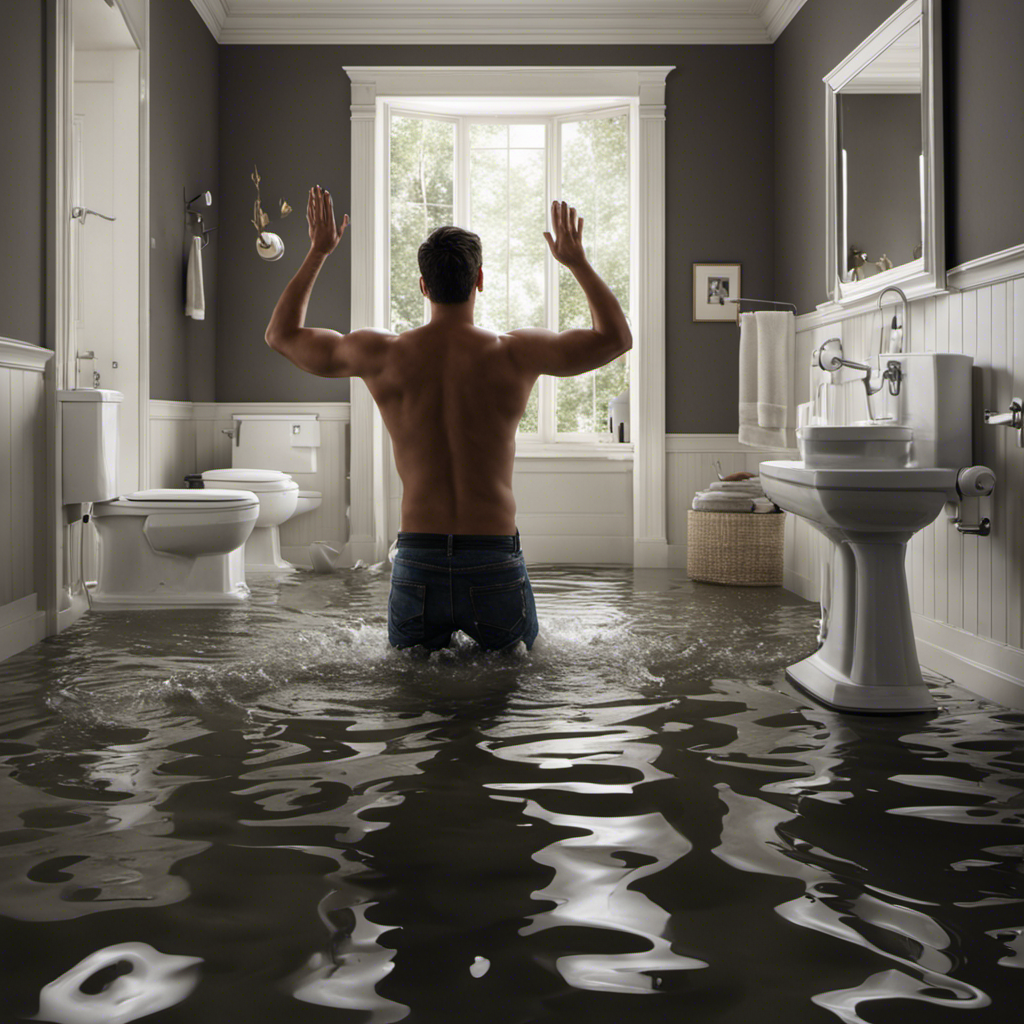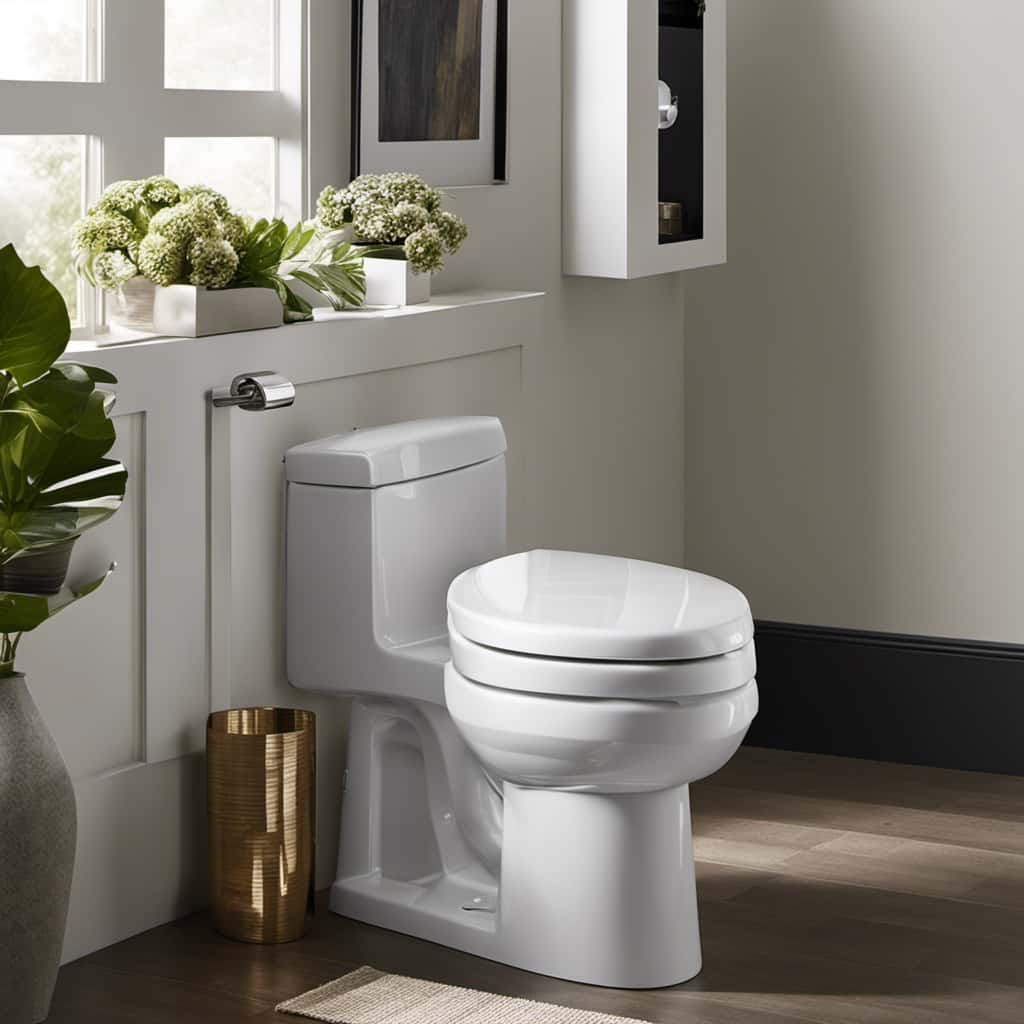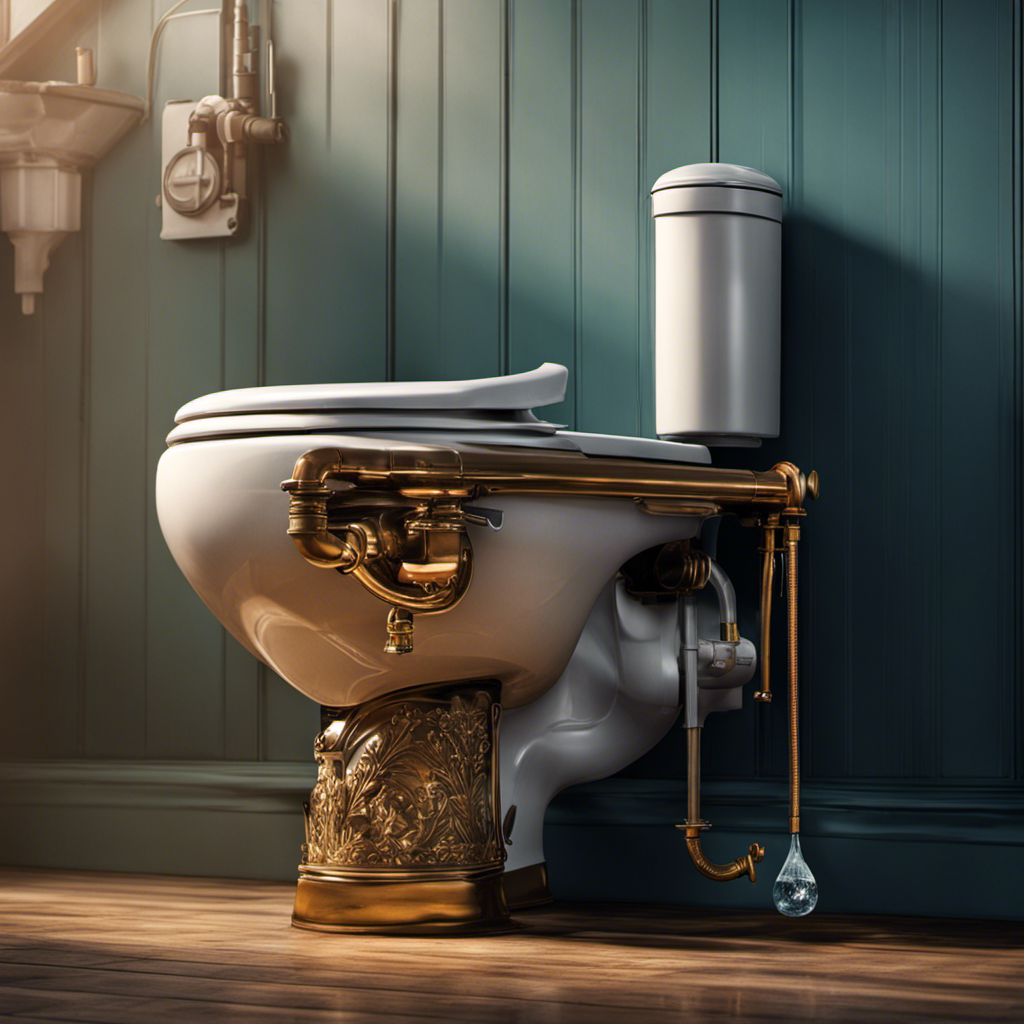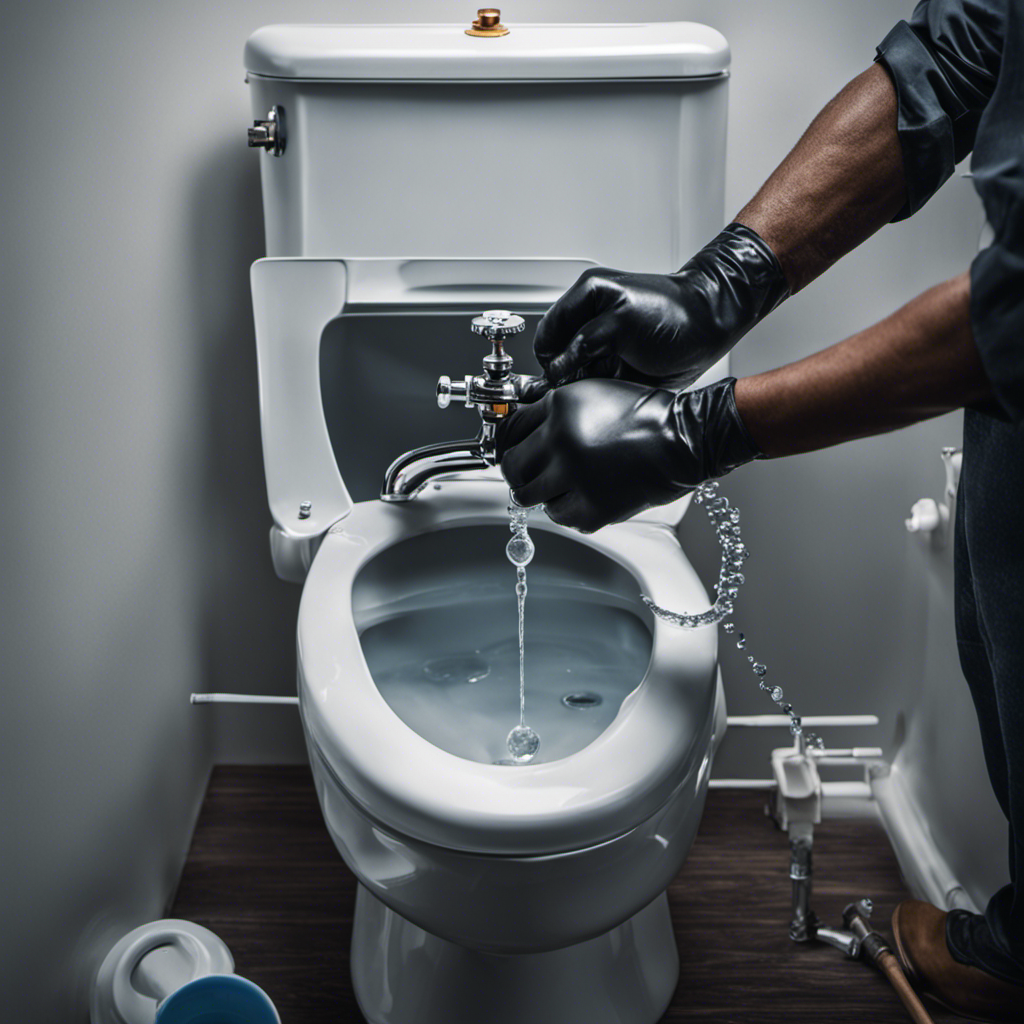Hey there!
So, picture this: you’re in your bathroom, minding your own business, when suddenly you notice something that nobody wants to see – your toilet is overflowing. Not exactly a pleasant situation, right?
Well, fear not, because I’ve got your back. In this article, I’ll walk you through exactly what you need to do if you find yourself in this messy predicament. From assessing the situation to preventing future overflows, I’ve got all the solutions you need.
Let’s dive in and tackle this toilet trouble together!
Key Takeaways
- Assess the situation and contact a professional plumber if water has leaked onto the floor or walls.
- Locate and turn off the shut-off valve near or behind the toilet to stop the water flow.
- Use a plunger to clear the blockage and test the drain by flushing the toilet.
- Clean up the mess using necessary supplies and disinfect the toilet and surrounding area.
Assess the Situation
First, check if the toilet is still overflowing. Assessing the damage is crucial in determining the next steps to take.
Look around the bathroom and see if water has spread to other areas. If the overflow is contained within the toilet bowl, the damage may be minimal. However, if water has leaked onto the floor or walls, it could indicate a more serious issue.
In such cases, it is advisable to contact a professional plumber immediately. They have the expertise to identify the underlying cause of the overflowing toilet and can provide appropriate solutions.
Stop the Water Flow
To stop the water flow, you’ll need to locate the shut-off valve. It’s usually located behind or near the toilet, either on the wall or on the floor. Once you find it, turn the valve clockwise to shut off the water supply. This will prevent any further overflow or damage.
Assess the situation and determine if there is any visible damage or blockage that needs immediate attention. If you notice any cracks, leaks, or clogs, it’s best to contact a plumber right away. They have the expertise and tools to fix the problem and prevent any further damage to your plumbing system.
Clear the Blockage
You can start by using a plunger to try and clear the blockage. Plungers are a common tool for unclogging toilets and can be quite effective if used correctly. Here are some techniques to maximize your chances of success:
| Plunger Techniques | Steps to Follow |
|---|---|
| Create a Seal | Position the plunger over the drain hole, making sure it forms a tight seal. |
| Apply Pressure | Push down firmly on the plunger, then pull up quickly. Repeat this motion several times. |
| Test the Drain | Flush the toilet to see if the blockage has cleared. If not, repeat the plunging process. |
| Use Hot Water | If the blockage persists, try pouring hot water into the toilet bowl to help break it down. |
| Call a Professional | If all else fails, it may be time to call a plumber for further assistance. |
Once you have successfully unclogged the toilet, you can move on to the next step: cleaning up the mess.
Clean up the Mess
After successfully unclogging the toilet, it’s time to start cleaning up the mess. Here’s what you need to do:
-
Gather necessary supplies: You’ll need rubber gloves, paper towels, disinfectant cleaner, and a trash bag.
-
Remove excess water: Use a plunger or a wet-dry vacuum to remove any remaining water from the toilet bowl. Be careful not to splash or spread the water.
-
Clean and disinfect: Start by wiping down the toilet bowl, seat, and surrounding area with disinfectant cleaner. Scrub any stubborn stains or residue. Then, thoroughly wipe down all surfaces with paper towels.
Remember to properly dispose of all contaminated materials and waste in a sealed trash bag to prevent spreading germs or causing health hazards. Wash your hands thoroughly after cleaning up to ensure proper hygiene.
Prevent Future Overflows
If your toilet has been overflowing frequently, it might be time to call a plumber to assess the problem. However, there are some maintenance tips you can follow to prevent future overflows.
One common cause of toilet overflows is a clogged drainpipe. To prevent this, avoid flushing excessive amounts of toilet paper or non-flushable items down the toilet. Regularly cleaning the toilet bowl and removing mineral deposits can also help prevent blockages.
Another common cause is a faulty fill valve or float. Check these components regularly and replace them if necessary. Additionally, make sure the water level in the tank is adjusted correctly to prevent overflow.
Lastly, consider installing a toilet overflow alarm, which will alert you if the water level becomes too high.
These simple maintenance tips can go a long way in preventing toilet overflows and the resulting mess.
Conclusion
In conclusion, when faced with an overflowing toilet, it’s crucial to act swiftly and effectively. By assessing the situation, stopping the water flow, clearing the blockage, and cleaning up the mess, you can resolve the issue efficiently.
However, the most important step is preventing future overflows. Regular maintenance, cautious use of toilet paper, and avoiding disposing of non-flushable items can save you from this messy situation in the future.
Remember, a little prevention goes a long way in keeping your toilet functioning smoothly.










